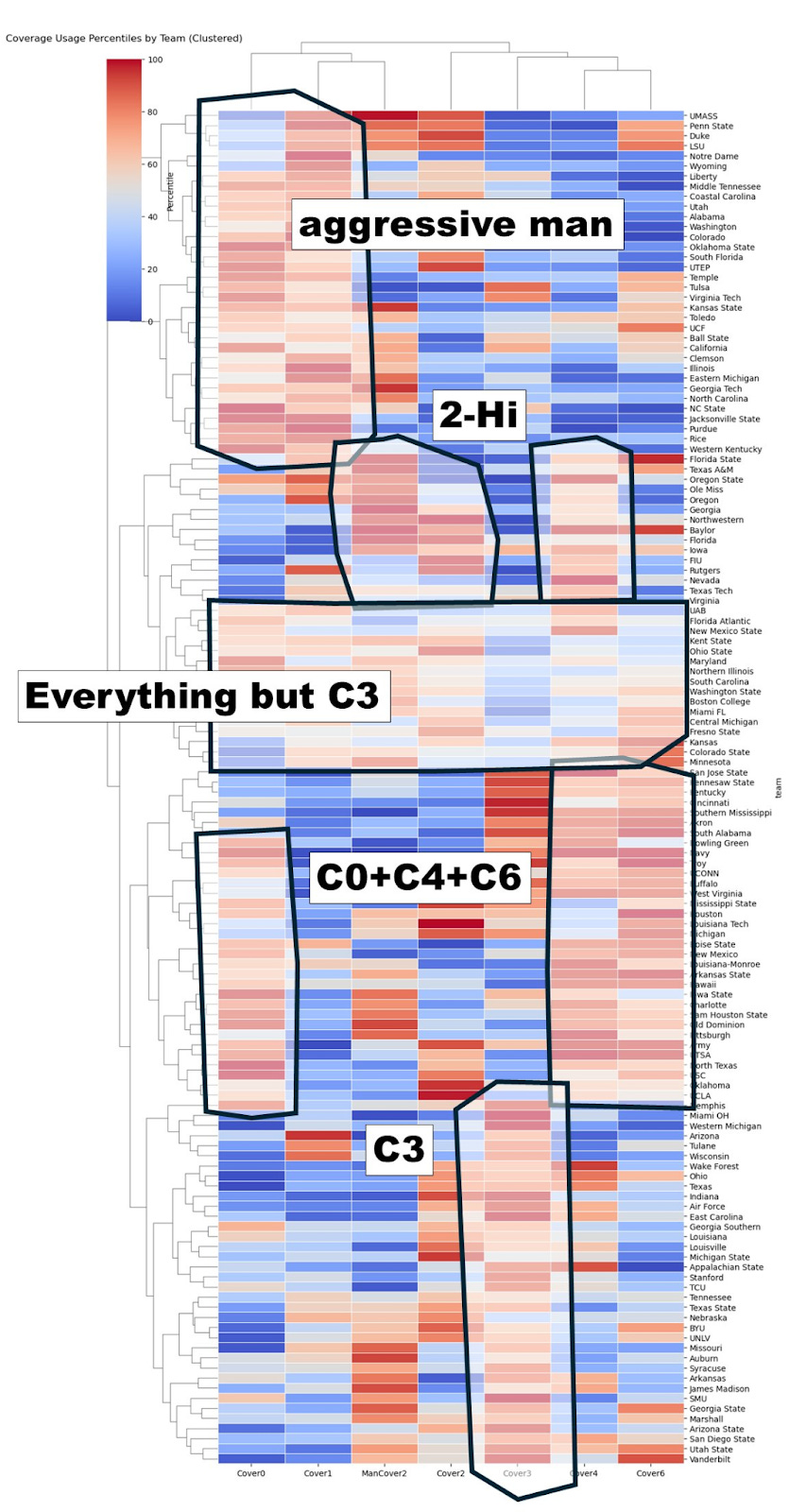Spring Position of Interest: Safety
Indiana retained Amare Ferrell and added two others to build a front line of starting safety talent. How does it fit within the Bryant Haines system?
If all breaks right for the anticipated starting safety trio at Indiana in 2025, it could be an extremely solid year for the Hoosiers at safety. Amare Ferrell ended 2024 graded 5th in his draft class of FBS safeties, while Louis Moore and Devan Boykin ended 2023 graded 22nd and 26th, respectively, in their draft class. That front line of safeties will have to hold, though, because what lies behind those three isn’t the most encouraging setup.
The defensive backfield benefits in a Bryant Haines defense perhaps more than any other in college football. Haines enjoys deploying havoc on offensive fronts and creating pressure in ways that consequently ease the jobs of defensive backs, particularly safeties. The Hoosiers ranked 6th in the FBS (1st in the Big Ten) in front-seven havoc rate and asked as little from its safeties (after the snap) as any defense Indiana has schemed in the last decade. And in conjunction, the safeties executed.
Shawn Asbury and Amare Ferrell posted the 2nd- and 3rd-best PFF Defense grades of individual Indiana safeties since 2015. Only Jonathan Crawford in 2017 graded higher, and even Jamar Johnson (2020) – the only DB to be drafted out of Indiana since 2010 – graded behind the two 2024 safeties.
This may come as a surprise, and one reason why is because Indiana didn’t require its safeties to cause a ton of havoc. No Indiana safety of the last decade has recorded more havoc instances than Crawford, who ranks 1st, 2nd, and 6th in IU safety seasons of havoc instances from 2015 to 2024. Even Phillip Dunnam in 2023 was 4th in havoc instances. Ferrell was 5th, Asbury was 9th, and Terry Jones ended at 12th (not bad for playing half the season as a starter) in 2024.
That’s not to say the safeties didn’t cause havoc. Ferrell actually intercepted passes at a similar rate as Jamar Johnson in 2020, when he was a ball hawk. Ferrell intercepted 4 passes on 25 targets, and Johnson intercepted 4 on 23 targets. Johnson was simply targeted more often per game, given the shortened 2020 season. All three 2024 safeties ranked in the top-6 in yards per catch allowed as well, a stat led by Chase Dutra in 2016, when he allowed an astonishing 4.8 yards per catch.
Indiana uses its safeties to do a lot of disguise work before the snap, but after the snap, there isn’t the pressure felt in previous seasons because the defensive front is either applying pressure, making DBs’ jobs much easier, or is getting home and making plays. Because of the execution of this philosophy, Indiana leaned on Cover 3 and Cover 2 pass coverage schemes at a fairly unique volume – keeping plays in front of them, not pressing too hard in coverage, and getting ball carriers to the ground when needed.
See the chart below from Bud Davis, which clusters teams by pass coverage characteristics. Indiana’s profile (inside the C3 cluster) isn’t shared by many other teams.
For those unfamiliar, Cover 3 essentially means the third level of the defense is split into thirds, each third covered by a DB, and Cover 2 is the same idea but with the third level split into halves, covered by two DBs. There’s a movement in the NFL right now, called 2-High, which is basically Cover 2 on nearly every play to prevent explosive offenses from getting behind the defenses. This is why you’ll see some of the most dynamic offenses own the lowest average depth of target (Patrick Mahomes had an average depth of just 7 yards per target in 2024, lowest among full-season starters).
Indiana’s safeties room ended the 2024 season on a bit of a sour note. Over the course of the season, Shawn Asbury and Amare Ferrell were each graded inside the top-50 FBS safeties by PFF, and Terry Jones graded at 142nd for his half-season role at Rover. But when Notre Dame broke through the defensive philosophy that had been effective all season for Indiana, the safeties struggled. This is from a BSB earlier this offseason:
“For Indiana, this was truly felt when Notre Dame chose to challenge Indiana’s ‘allow catches, limit YAC’ tendency by averaging its 2nd-lowest depth of target of the season (just 5.5 yards downfield), thus completing 72% of its attempted passes and forcing Indiana DBs to miss 12 tackles. The Hoosiers allowed 108 yards after catches, which was 54% of Notre Dame’s passing total, and Notre Dame converted a season-high 14 first downs through the air – crucial since it couldn’t get much going on the ground.”
Indiana’s starting safeties accounted for 9 of those 12 missed tackles by DBs.
It wouldn’t be shocking if Haines and his staff have been working on building a defense that can better combat that exact approach, as teams will be using the Notre Dame strategy – easier said than done, of course – as a template for how to attack the Indiana defense in 2025. That includes a lift in talent at safety, which we’ve seen in the form of incoming transfers.
That increase in talent can raise the ceiling of the defense in 2025, and if Indiana needs to dip behind that front line of starting safeties (for whatever reason), this general approach to the position might provide enough of a screen to get by with what lies beneath.
Who is in the safeties room?
Keep reading with a 7-day free trial
Subscribe to Bite-Sized Bison to keep reading this post and get 7 days of free access to the full post archives.







